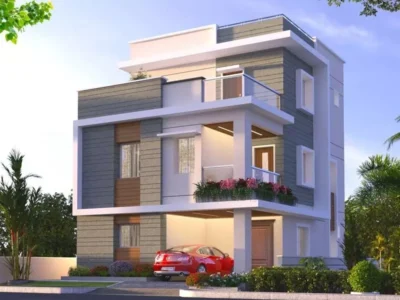Vancouver homeowners looking to enhance accessibility face an important decision: Should they opt for air-driven lifts or traditional elevators? With their sleek designs, energy efficiency, and compact installations, air-driven lifts are growing in popularity, but traditional elevators have their merits too. Here’s a detailed comparison to help you make an informed choice for your Vancouver home.
Understanding Air-Driven Lifts
Air-driven lifts, like those offered by Nibav Lifts, utilize vacuum technology to transport passengers between floors. They operate using differences in air pressure, which minimizes the need for heavy machinery or extensive structural modifications.
Key Features:
- Eco-Friendly and Energy-Efficient: Consuming as little power as a regular home appliance, these lifts require zero energy during descent, making them a green solution.
- Compact Design: With minimal space requirements (e.g., a 37-inch diameter for Series III), they’re ideal for homes with limited floor area.
- Quick Installation: Thanks to their self-supported structure and modular design, air-driven lifts can be installed in just 24–48 hours.
What Makes Traditional Elevators Stand Out?
Traditional elevators rely on mechanical or hydraulic systems for operation. While they are a tried-and-true option, they may require significant civil work, such as pits, machine rooms, or dedicated shafts.
Advantages:
- Higher Load Capacity: Traditional models often accommodate more weight, making them suitable for commercial use or larger families.
- Customizable Cabin Sizes: These elevators can often be tailored for specific needs, such as wheelchair accessibility or larger groups.
Head-to-Head Comparison
| Feature | Air-Driven Lifts | Traditional Elevators |
| Energy Efficiency | Consumes less energy; uses air pressure | Higher energy usage for motors and hydraulics |
| Space Requirements | Requires less space; no pit needed | Needs pits, machine rooms, and shafts |
| Aesthetic Appeal | Panoramic glass design; modern look | Conventional designs; less focus on aesthetics |
| Installation Time | 1–2 days with minimal civil work | Weeks of construction work may be required |
| Safety Features | Advanced tech like emergency descent during power outages | Standard safety features vary by model |
| Maintenance | Low maintenance; fewer mechanical parts | Higher maintenance for motors and hydraulics |
Why Air-Driven Lifts Are Perfect for Vancouver
Vancouver homes often embrace modern architecture and sustainable living, making air-driven lifts an excellent match. These lifts not only blend seamlessly into stylish interiors but also align with the city’s focus on eco-conscious living.
Considerations:
- Compact Homes: Many Vancouver homes have smaller spaces or architectural constraints. Air-driven lifts fit perfectly without needing structural reinforcements.
- Energy Efficiency: For homeowners aiming to reduce their carbon footprint, the eco-friendly design of air-driven lifts is a significant advantage.
- Modern Design: The sleek, panoramic view provided by these lifts enhances the aesthetic of contemporary homes.
When to Choose Traditional Elevators
If your home requires higher load capacities or if you’re planning for multi-family housing, traditional elevators might be better. Additionally, they are often preferred for homes with larger budgets and ample space.
Vancouver-Specific Benefits of Air-Driven Lifts
- Minimal Disruption: Given Vancouver’s strict building codes, the minimal civil work required for home lifts simplifies the installation process.
- Adaptability: With customizable options, these lifts can easily be adjusted for unique home designs or even relocated.
- Cost-Effective Financing: Companies like Nibav offer flexible financing options, ensuring affordability for homeowners.
Conclusion: Which Should You Choose?
For most Vancouver homeowners, air-driven lifts are the smarter choice due to their compact size, energy efficiency, and minimal installation requirements. However, if you prioritize higher load capacity or need a more traditional design, a conventional elevator might be the way to go.
Ultimately, the best elevator for your home depends on your space, budget, and personal preferences. No matter your choice, investing in a home lift can significantly enhance accessibility and convenience in your living space.








Comments